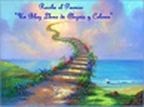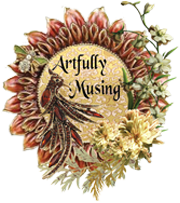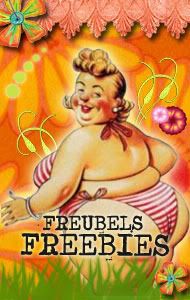 It was Vesak Day on Saturday, 9th May 2009. Most of us in Singapore already do not work on Saturdays so it really did not feel much like a holiday. This is however an important day in Buddhist India because on this day, Buddhists celebrate 3 major events in Gautama Buddha's life : his birth, his enlightenment and his passing.
It was Vesak Day on Saturday, 9th May 2009. Most of us in Singapore already do not work on Saturdays so it really did not feel much like a holiday. This is however an important day in Buddhist India because on this day, Buddhists celebrate 3 major events in Gautama Buddha's life : his birth, his enlightenment and his passing.I thought I will also take this opportunity to celebrate gifts which I have received for the temple I built on Day 44 & 45 and to express my gratitude.
Firstly, the beautiful sitting Buddha (2 1/2" by 1 1/2") from Mercedes. This is an exquisite replica, so beautiful I took pictures of him front and back (top pics). I received this together with a boxful of other beautiful things one week ago, Monday because Mercedes wanted to cheer me up! So thank you, Merce!
Not contented with having sent me 2 Buddhas already (see standing Buddha on left), Mercedes included this Siamese Buddha (2" by 1") in the same package (thank you again, my dear friend):
 And lo and behold, Taenia too had sent me one (together with the elephant painting package) which I could use for a wall. It has a most benevolent expression and measures only 3/4" wide and less than 1" tall. Thank you, Taenia!
And lo and behold, Taenia too had sent me one (together with the elephant painting package) which I could use for a wall. It has a most benevolent expression and measures only 3/4" wide and less than 1" tall. Thank you, Taenia! You can see from the 3 representations above that they all depict Buddha in slightly different ways. Here's how you can tell where they are from.
You can see from the 3 representations above that they all depict Buddha in slightly different ways. Here's how you can tell where they are from.INDIAN IMAGES- 2 schools of art influenced the depiction of Buddhas in India .


 The Gandharan style which was greatly influenced by the Greek art and its concept of "man-god" inspired by Greek mythology and the Mathura art form which was based on a strong Indian tradition. Artistically, the Gandharan school of sculpture is said to have contributed wavy hair, drapery covering both shoulders, shoes and sandals, acanthus leaf decorations, etc. It is still a matter of debate whether the anthropomorphic representations of Buddha was essentially a result of a local evolution of Buddhist art at Mathura, or a consequence of Greek cultural influence in Gandhara.
The Gandharan style which was greatly influenced by the Greek art and its concept of "man-god" inspired by Greek mythology and the Mathura art form which was based on a strong Indian tradition. Artistically, the Gandharan school of sculpture is said to have contributed wavy hair, drapery covering both shoulders, shoes and sandals, acanthus leaf decorations, etc. It is still a matter of debate whether the anthropomorphic representations of Buddha was essentially a result of a local evolution of Buddhist art at Mathura, or a consequence of Greek cultural influence in Gandhara. THAI IMAGES- In modern times, Buddha images are often replicas of images from the Sukhothai and other early periods, often more ornately and elaborately adorned. In the 4th century, the style of the Thai Buddha images radically changed due to the influx of new ideas from Sri Lankan Buddhism. Buddha images were cast with the intention of depicting superhuman traits of the Buddha, and were designed to express compassion and serenity in posture and facial expression. The Sukhothai period witnessed the innovation of the four modern postures of the Thai Buddha, i.e. walking, standing, sitting and reclining. Images often had a flame-shaped aureole, finely curled hair, a slight smile, broad shoulders and an oval face.Faces in new innovative depictions are typically more realistic and human-like. An elongated flame aureole is popular.
THAI IMAGES- In modern times, Buddha images are often replicas of images from the Sukhothai and other early periods, often more ornately and elaborately adorned. In the 4th century, the style of the Thai Buddha images radically changed due to the influx of new ideas from Sri Lankan Buddhism. Buddha images were cast with the intention of depicting superhuman traits of the Buddha, and were designed to express compassion and serenity in posture and facial expression. The Sukhothai period witnessed the innovation of the four modern postures of the Thai Buddha, i.e. walking, standing, sitting and reclining. Images often had a flame-shaped aureole, finely curled hair, a slight smile, broad shoulders and an oval face.Faces in new innovative depictions are typically more realistic and human-like. An elongated flame aureole is popular.On Vesak Day, devout Buddhists assemble in various temples before dawn for the ceremonial hoisting of the Buddhist Flag and the singing of hymns in praise of the holy Triple Gems: The Buddha, The Dhamma (His teachings), and The Sangha (His disciples). Devotees bring simple offerings of flowers and candles to lay at the feet of their great teacher.
 Mercedes sent these 4 pots of lovely flowers (1 1/2" by 1/2") too in the "Cheer Me Up Package". My gratitude, Mercedes.
Mercedes sent these 4 pots of lovely flowers (1 1/2" by 1/2") too in the "Cheer Me Up Package". My gratitude, Mercedes. The symbolic offering of flowers is to remind us that just as the beautiful flowers would wither away after a short while, life is subject to decay and destruction and that we must remember its impermanence.
The symbolic offering of flowers is to remind us that just as the beautiful flowers would wither away after a short while, life is subject to decay and destruction and that we must remember its impermanence. The symbolic offering of candles is to remind us that just as a candle gives light to chase away darkness and in the process melts away (“sacrifice itself”), we should be mindful in “chasing” away our ignorance and care for the well being of others.
The symbolic offering of candles is to remind us that just as a candle gives light to chase away darkness and in the process melts away (“sacrifice itself”), we should be mindful in “chasing” away our ignorance and care for the well being of others.In Hinduism, incense plays a big part in ceremonial events. Solid storax resin was spread over a hearth or torch, and India's sweet-scented aromatic fragrance was produced by slow burning. Sandal wood and mansonia were mainly used for these purposes. So I bought these 2 incense burners which were made in China (about 2" tall by 2 1/8" wide)

Joss sticks are a type of incense used in worship in many Asian countries. In Buddhism they are believed to aid spiritual communication and serve as an offering.
This is what some Buddhists believe: Whenever a joss-stick is burned during worship, the monks and Buddhist followers gain a feeling of respect in their minds, ... of cleansing through their eyes, if there is no excessive smoke from the many joss-sticks, and... of peace through the environment of silence. Joss-sticks are also regarded as a symbol of paying homage to Lord Buddha. 3 joss-sticks must be presented each time, each with its own symbolism. The first stands for Lord Buddha's wisdom, the second for his purity, and the third for his kindness.After chanting and making their wishes, worsh
their minds, ... of cleansing through their eyes, if there is no excessive smoke from the many joss-sticks, and... of peace through the environment of silence. Joss-sticks are also regarded as a symbol of paying homage to Lord Buddha. 3 joss-sticks must be presented each time, each with its own symbolism. The first stands for Lord Buddha's wisdom, the second for his purity, and the third for his kindness.After chanting and making their wishes, worsh ippers bend low to plant 3 joss-sticks in a clay container or ceramic vase containing sand or dry clay. This vase must be located in the centre at a level lower than the Buddha image.
ippers bend low to plant 3 joss-sticks in a clay container or ceramic vase containing sand or dry clay. This vase must be located in the centre at a level lower than the Buddha image.
The one below is a miniature gift (2" by 2") from my mum who in turn got it from my sister, Shir. When I asked Shir this evening, she told me it was given to her as well from someone who must have bought it from Tibet or Kathmandu.
 I also wish to celebrate my gifts from both Rosanna and Mary who have given me the Proximade Award again :). Thank you, my friends, from the bottom of my heart.
I also wish to celebrate my gifts from both Rosanna and Mary who have given me the Proximade Award again :). Thank you, my friends, from the bottom of my heart.
The greatest part about Vesak Day is that it celebrates life and happiness as well as your wishes for the happiness of others. Not only is this a peaceful holiday, but all killing is avoided, and forgiveness given, even for your worst enemies.
So on this day, we rejoice, reflect, repent . We then give and forgive. That, according to the Buddhists is how we will attain happiness.























































































































































5 comments:
Thanks for your sweet comments on my blog. I love how big you dream and plan. I've always felt that anything worth doing is worth doing on a grand scale! I can't wait to see what you do with your palace!
Love to read your blog and how pretty are Mercedes's gifts.
Your palace is a real piece of art!!!
Warm regards,
Meli
Those little buddah's look very happy in their new home!
Mercedes
Thank you, Texas Belle! I am so enthralled with yours and have been thinking about those table legs of yours and whether I can build my palace with frames!LOL. I think you are resourceful, creative and of course talented!
Hey Meli,thank you so much for those sweet words! :) Your parcel is FINALLY FINALLY on the way but I was in such a rush I don't think I know what I scribbled !! haha..
Merce, I love ALL your Buddhas :) You are the GREATEST!
Post a Comment